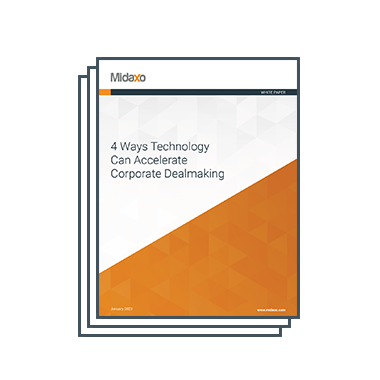An effective post-merger integration (PMI) process is critical to maximizing the potential value of a deal. While for many organizations hard facts relating to revenue and costs may lie at the heart of the PMI process, the less tangible human side of M&A can be equally as important.
Indeed, in today’s era of M&A, intangible assets (people, knowledge, etc.) can be the driving force behind value creation. Unfortunately, intangible factors are often ignored when an M&A strategy is being appraised. When intangibles are ignored (or not given the due attention they deserve) a deal may be adversely affected by:
- Valuable synergies not being captured due to cultural differences;
- Key talent leaving through cuts in pay/benefits or intolerable working practices;
- Management failing to communicate the rationale for the deal and what the new organization will mean for employees.
An M&A strategy might make perfect sense on paper, but the core driver of the deal – people – may be ignored. Addressing the three issues above and the uncertainty and concerns that may encircle them (which may adversely impact a deal) can be dealt with via (i) effective communication (ii) a focus on employee retention and (iii) giving consideration to culture.

Management often fails to consider how little control they have over the success of an M&A strategy.
While they (and shareholders) will advocate the deal and put in place the factors necessary for the deal to be achieved (via a costly PMI process) it is ultimately the employees of the Buyer and Target who must do what is asked of them for the deal to be successful at a grass-roots level. No merger integration checklist, however detailed and comprehensive, can compensate for a lack of buy-in on the ground.
Intangible issues such as those relating to people are labelled as ‘intangible’ because they are difficult to quantify and measure. They are often an after-thought to the minutiae of spreadsheet detail, yet it is imperative that the human factor is not ignored during M&A as it is one of the key components to value creation.
So, how can this be addressed?
- Pre-deal the Buyer and Target should devote attention and resources to human capital (and not just the financial aspects of the deal);
- Assess intangible values such as employee satisfaction and knowledge;
- Consider what may drive key talent away and what may retain and motivate it;
- No merger is a true merger so consider which entity will be the dominant force going forward;
- Carry out a SWOT analysis to uncover the cultural differences and understand the impact of such differences;
- Maintain open lines of communication when it comes to announcing the deal and throughout the PMI process.
Communication
Communication issues are often cited as one of the primary factors behind failed M&A deals.
Communicating with employees and creating a culture for them to succeed in post-deal are factors fundamental to successful integration and value creation. M&A often leaves employees and management feeling left in the dark and anxious about what the future holds. Poor communication from the top filters down and can prevent managers possessing the necessary information to answer questions asked by employees.
In most cases, it is inevitable that many employees will be left questioning how the deal will affect them, what support they will receive throughout the post-merger integration steps and whether a role in the new organization will exist for them at all. Ultimately, lack of communication can promote uncertainty and trust issues – therefore having a detrimental effect on employee engagement.
When undertaking an M&A deal, it is important to keep employees of both the Buyer and Target informed at all times. Employees should be informed of the progress of the PMI process via a range of communication media (emails, company intranet and briefings).
Furthermore, management being alive to the questions, concerns and fears employees might have and effectively communicating answers will foster a sense of openness, transparency and trust – all vital to successful integration.
- Be clear on whether the deal represents a merger or an acquisition;
- Articulate the vision/mission and goals, and be consistent in the message. Avoid wasted time where employees speculate as to what is happening – potentially leading to loss of morale and productivity;
- Translate the message to different parts of the organization if necessary – the language used in communicating to the finance team is likely to differ from that used in addressing IT;
- Seek objective feedback from employees;
- Set clear timetables and ensure employees know what they are accountable for and to whom;
- Consider outside help from external advisors/consultants if necessary;
- Design team and assign leaders who can be used as sounding boards during the PMI process.
Managers must not only be provided with adequate information relating to the deal, they must be trained on how to deliver it. They must learn how to coach others and show empathy when it comes to the feelings of their staff. They must learn about change management and how to deal with resistance (which is an inevitable part of integration).
Employee productivity can often dip where staffing decisions are being made. The fear of making a mistake and being exposed can stifle creativity or efficiency, as employees become increasingly cautious.
Once the integration process is underway, an organization can forget to take stock and check its progress. It can be challenging to redirect the integration process, but it is essential to do so to achieve the desired outcome – thus, communication is key.
Employee Retention
Employee retention can be a challenge when it comes to M&A – many employees perceive a deal as a threat. Characteristically, many deals are associated with retention issues – often as a result of negative beliefs held by employees (rather than extreme rounds of lay-offs). Negative views can be harbored due to uncertainty over the future of the organization’s future direction, job security, perceptions of leadership credibility and a sense of confusion attributed to a lack of effective communication.
During the PMI process, it is essential to keep employee turnover low for both business continuity and the ability to realize the benefits of a deal. Additionally, there can be significant financial implications arising from the cost of recruiting new employees. Perhaps most fundamental, however, is that failure to retain employees can result in a loss of knowledge/attrition of human capital and have a damaging effect on customer relationships.
A deal can often result in stress, anxiety or feelings of not being treated fairly – feelings that can have implications for employees and their future at the organization. It is important that the organization works to preserve (or regain) employee trust during the PMI process. This task falls principally with management in that they must maintain lines of communication with employees to foster a sense of transparency, openness and trust.

A loss of employees during the PMI process will affect daily business operations. This is likely to have a domino effect further along in the organization and exacerbate the negative sentiment of an already disenfranchised workforce. Companies considering M&A should concentrate on retaining key talent for the long term.
HR are seldom involved with the appraisal of target companies as part of the M&A process. If they are not privy to the M&A strategy and the appraisal of talent and culture in the early stages, they will have to play catch up during the PMI process. This will inevitably result in solving problems, which could have been avoided with some up-front work in the form of HR due diligence.
HR should work closely with other parts of the organization to ensure staffing decisions are made with strategy in mind. This can help in retaining key talent (for instance, via the alignment of pay and benefits).
During the PMI process, the selection of employees will be made in context to the operational requirements of the new organization. If layoffs are made too hastily, human capital can be lost. Paradoxically, the process of recruiting new employees (or even re-recruiting ex-employees) can cost significantly more than retaining original employees.
A lack of information over whether employees will keep their jobs will engender fear in employees. This can easily create a negative atmosphere of distrust of management and unhealthy competition for jobs (employees may sense that their co-workers or counterparts from the other organization may be stealing their jobs). This can create annoyances, resentment and generally result in employees being less effective in their working practices during this time.
In terms of retaining key talent the following measures could be considered:
- Provide sufficient access to information – for instance, management should communicate why the deal is advantageous and ensure that the message resonates with employees;
- Monitor workloads – during the PMI process employees are often required to take on additional workloads. It is imperative to ensure that employees feel they can cope and know where the support channels are in times of need;
- Provide opportunities for on-going learning and professional development – the cost of human capital attrition can far outweigh the costs of training and development. Furthermore, such initiatives give the message that employees are valued.
- Meet regularly with employees via one-on-one meetings or departmental catch-ups. Discuss with employees how they are coping in their new role and with the increased workload;
- Provide tangible performance management objectives and incentivize key talent.
- Encourage employee focus groups;
- Provide sufficient managerial support – managers can be role models and play a critical part in the retention of employees during the PMI process;
- Develop employee engagement surveys to monitor employee sentiment of the deal.
Culture
M&A deals can add up strategically and financially but not culturally. While it is easy for a deal to be treated as a financial transaction and to quantify the synergies, it is more difficult to predict how the combining of two corporate cultures (often very distinct and sometimes built up over many years) will succeed.

Corporate culture can be regarded as shared values, beliefs and assumptions that influence the behavior, attitudes and meaning of an organization. Culture is implicit; it affects how people behave and is resilient against change. It is difficult for a merged organization to carry on the culture of the previous organizations.
Typically, M&A deals engender shifts in management styles, practices and strategies, which can have negative consequences on the people at the heart of the organization. An abrupt shift in culture can bring about significant disruption and unease in an organization.
An effective M&A due diligence process can flag the ‘measurables’ within an organization – however it is imperative to carry out cultural surveys and run diagnostics to understand the cultural norms within both organizations pre-deal. Cultural influences can be significant and must be identified to the greatest extent possible.
For instance, the decision-making processes of the Buyer may be the polar opposite to that of the Target. Similarly, while the leadership style of the Buyer could be dictatorial, a more casual and democratic approach may be observable within the Target.
It is a misconception to assume that people issues are easily overcome. For instance, employees of the Target may be used to access to top management, flexible working arrangements and a casual dress code. Such aspects of the working environment may seem trivial, but if new management takes them away it may cause anger, resentment and create inefficiencies within working practices – to the detriment of the deal and value creation.
A lot of today’s M&A is cross-border. This can bring about complications in the transfer of working practices if two distinct cultures are being considered. For instance, managers do not always realize that performance drivers vary between Buyer and Target. If a series of strategic changes are introduced, it is unreasonable to expect that these will automatically be understood and followed by a foreign counterpart.
However, it is important that if new employees do not embrace the new culture and norms, the reasons for this are understood. This emphasizes the need for effective communication and for consideration of cultural differences to be taken into account when M&A activity is cross border. Without this consideration, employees may feel confused, misinformed and unmotivated.
Arguably the most beneficial approach to addressing cultural issues is to define a set of desirable cultural qualities (for instance – excellent customer care, innovative, entrepreneurial, team-focused, respectful) and to compel employees to adopt these norms in their everyday behavior.
One of the foremost challenges of the PMI process is time pressure. PMI seldom allows for a detailed cultural diagnosis or a more long-term culture change project. Therefore, a more concentrated approach, based on flagging the high-risk factors in the establishment of the new organization’s culture should be examined.
A list of key risks that will likely be encountered in most deals can serve as a starting point for cultural analysis. These may include:
- Founding a common approach to decision-making, which achieves speed and decisiveness;
- Founding an internal brand — the value to the employee of being part of the new organization manifested in a way, which appeals to employees of the Buyer and the Target (this will depend on the extent to which the deal is a merger or an acquisition).
To further address matters of culture during the integration process, the following steps may be considered:
- Consider both the strengths and weaknesses of the two organizations – strengths are sometimes incompatible so they cannot simply be added together;
- Make culture a core element of change management – if culture is core it will be regarded as being essential to a successful integration process;
- Assign cultural leaders – typically HR representatives who can drive the importance of culture;
- Ensure that culture is tangible where possible – for instance, quantifying the results of a merged sales team working to the new adopted culture.





